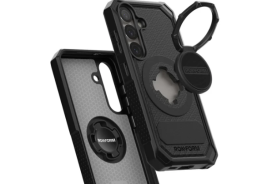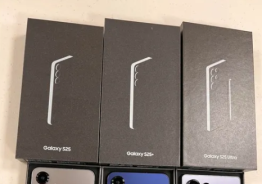At a press conference in New York City on Wednesday, April 5, HTC and Sprint jointly announced the offspring of their collaboration: the HTC EVO 4G LTE. The One line may be HTC's flagship, but the HTC EVO is Sprint's version, and it's basically a doppelganger of the HTC One X expected soon on AT&T.
Back in February, at the Mobile World Congress (MWC) 2012, HTC announced the One series as its worldwide flagship line. Sprint, however, had reserved the right to name its new HTC phone, and chose to keep its own established EVO brand rather than the One moniker. "It's an EVO. It's one of the strongest, most powerful brands of smartphone," said Tom Harlin, a spokesman for HTC, as cited by PC Magazine. With 7 million EVO phones sold so far, Sprint seems to find it hard to leave its "EVO" brand.
Brand Equity
The new HTC EVO 4G LTE is elegant, slim, powerful, and, as PC Magazine points out, it is basically a HTC One X with a different name, a different case design and a kickstand. Both HTC and Sprint will work closely together to sell this phone. "It's a collaboration," said Harlin. "That makes it an EVO, not a One." Though the HTC EVO 4G LTE bears many similarities to the HTC One X, Sprint keeps its brand.
"We have a lot of brand equity at Sprint and HTC in EVO," PC Magazine cites Farid Adib, Sprint's product chief. "It's hard for us to let go of that franchise, and it does have a lot of dedicated users. You don't want to disenfranchise customers by letting go of something that's very important to them," he explained. According to Adib, EVO is a more established brand than One. "It's going to take time for the One to build brand equity."
Comparing Specs
Both the HTC One X coming on AT&T and Sprint's HTC EVO 4G LTE are expected in the second quarter of 2012. They both have similar dimensions and weight, 4G LTE capabilities, touch-screen controls, Corning Gorilla Glass protection and HTC Sense UI. Both smartphones will feature a 4.7-inch Super IPS LCD2 capacitive screen with a resolution of 720 x 1280 pixels and a pixel density of 312 pixels-per-inch (ppi), and have multitouch displays.
Memory
There is, however, a difference when it comes to memory. Sprint's HTC EVO will feature a microSD card slot, allowing up to 32GB of additional storage, while the HTC One X has no microSD card slot. Both phones offer 16 GB of internal storage and 1GB of RAM.
Camera
In terms of camera, both the HTC One X and the HTC EVO 4G LTE will offer the same features: an 8-megapixel primary camera with a 3264 x 2448 pixel resolution, autofocus, LED flash, simultaneous HD video and image recording, geo-tagging, as well as face and smile detection. Both phones offer 1080p video recording at 30 frames-per-second (fps), stereo sound recording and video stabilization, and both have a 1.3-megapixel secondary camera.
Features
Both Sprint's and AT&T's HTC phones will run on Android 4.0 Ice Cream Sandwich, with a dual-core 1.5 GHz CPU and Adreno 225 GPU. Both feature Beats Audio, active noise cancellation with dedicated mic, accelerometer, gyro, proximity sensor, and compass.
The HTC One X on AT&T will also support GPRS. The HTC EVO 4G LTE will have a Li-Ion 2000 mAh battery, while the HTC One X will have a Li-Po 1800 mAh battery.
(reported by Alexandra Burlacu, edited by Surojit Chatterjee)
© Copyright 2025 Mobile & Apps, All rights reserved. Do not reproduce without permission.












